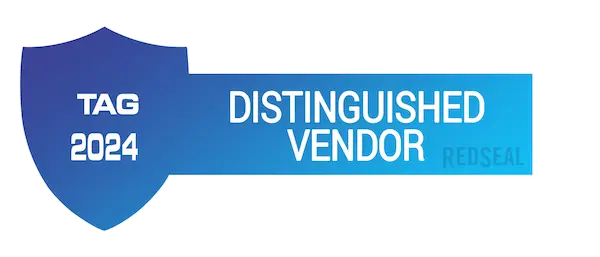RedSeal Extends Digital Resilience Platform Across Network Environments, Improves Security and Network Teams’ Productivity with New Integrations
Expedites Analysis with Seamless Integration into Network Security Products from Splunk, Rapid7 and ForeScout
SUNNYVALE, Calif. – Today RedSeal (www.redseal.net) announced enhancements and new integrations for its market leading network modeling and risk scoring platform. The enhancements will give RedSeal users a single, comprehensive understanding of network security across their datacenter, cloud and software-defined networks.
The enhancements also help security teams be more productive despite ever-increasing demands by delivering actionable intelligence from RedSeal’s network modeling platform directly into Splunk’s Enterprise Security SIEM, Rapid7’s Nexpose vulnerability management software, and ForeScout’s CounterACT.
“Enterprises today have complex network infrastructures with many point product security solutions,” said Ray Rothrock, chairman and CEO of RedSeal. “To improve their resilience in the face of inevitable attacks, they need a holistic view of their network that’s deeply integrated with their current security solutions.”
Platform Enhancements
The digital infrastructures for nearly all Global 2000 companies include on-premise, cloud and virtualized networks. The resulting networks are large, complex, and constantly changing, making a complete and detailed understanding of the current state of a network very difficult. To address this, RedSeal can now model complete networks – including software-defined networks (SDNs) in VMWare NSX and enhanced modeling of Amazon Web Services Virtual Private Clouds (VPCs).
RedSeal provides critical visibility into access controls for these SDN environments, and alerts users to violations of customized policies they’ve established for their organizations.
Expanded Integrations with Splunk, Rapid7 and ForeScout
To streamline security teams’ efforts, and further improve network security, RedSeal now integrates into the user interfaces of Splunk’s Enterprise Security SIEM, Rapid7’s Nexpose vulnerability management software, and ForeScout’s CounterACT.
This improves the efficacy of each of these products, giving their users unprecedented network context within the tools, and in the format, they’re already using. Specifically:
- Integration with Splunk’s Enterprise Security SIEM accelerates incident response efforts. RedSeal provides the SIEM with critical network context and identifies access paths to and from Indicators of Compromise (IOC) leading to other critical assets.
- Integration with Rapid7’s Nexpose vulnerability management software identifies gaps in vulnerability scan coverage.
- Integration with ForeScout’s CounterACT prioritizes hosts in terms of actual risk so appropriate action can be taken.
“Customers tell us that RedSeal’s unique information adds value to a number of their security functions,” said Rothrock. “Now they can get this information without having to open and learn another product. These apps give our customers even more productivity and efficiency, accelerating their ability to identify and respond to problems.”
To learn more, visit RedSeal Integration Apps.
About RedSeal
RedSeal’s network modeling and risk scoring platform is the foundation for enabling enterprise networks to be resilient to cyber events and network interruptions in an increasingly digital world. RedSeal helps customers understand their network from the inside, out – and provides actionable intelligence, situational awareness and a Digital Resilience Score to help enterprises measure and ultimately build greater resilience into their infrastructure. Government agencies and Global 2000 companies around the world rely on RedSeal to help them improve their overall security posture, accelerate incident response and increase the productivity of their security and network teams. Founded in 2004, RedSeal is headquartered in Sunnyvale, California and serves customers globally through a direct and channel partner network.



